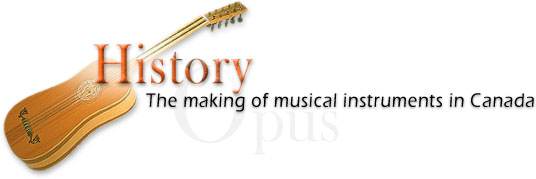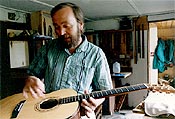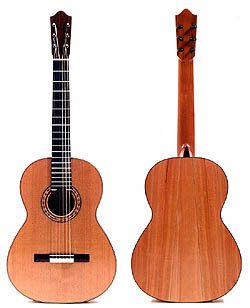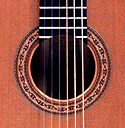
| Opus 30 - Flamenco Guitar |
|
|
The rose on this instrument was designed and crafted by the luthier. A piece of carved ivory graces the bridge. The back of the guitar is in three sections. Oskar Graf 
Born in Germany in 1944, Oskar Graf learned cabinetmaking, and furniture and commercial design in Berlin. After immigrating to Canada in 1968, he became interested in making stringed instruments and, in 1970, began to construct simple instruments associated with traditional music, such as the Appalachian dulcimer and, later, the banjo, box zither and mandolin-banjo. He made his first classical and steel-string guitars in 1973 and added lutes to his repertoire in 1980. Graf also repaired and restored instruments while living in Kingston from 1982 to 1985. Graf approached instrument making through cabinetmaking, an art with many comparable features. He pursued his apprenticeship as a luthier by visiting European museums and the workshops of celebrated luthiers and by participating in workshops given by European masters, such as José Romallinos. Oskar Graf's workshop is located in Clarendon, Ontario.
|
 |




